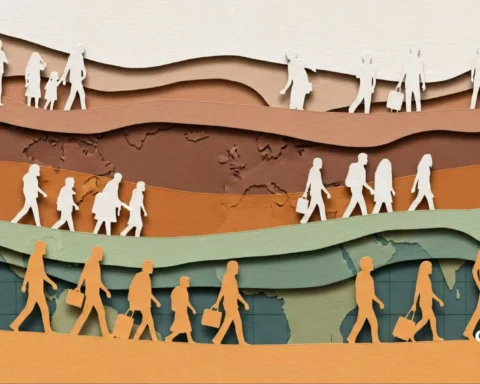Adding to the celebration of Chandrayaan-3’s first landing anniversary on the Moon, recent data from the Pragyan Rover has discovered that the Moon once had a massive ocean of magma (molten rock) under its surface, reinforcing the lunar magma ocean hypothesis. This finding is a major milestone in the field of astronomy, making a significant contribution to our understanding of the Moon’s early history.
Just before Friday, which is the first anniversary of the Chandrayaan-3’s landing on the Moon’s south pole on August 23rd, 2023, a discovery made from the data delivered by the Pragyan rover has left astronomers amazed.
Under the guidance of Santosh Vadwale from the Physical Research Lab (PRL) of Ahmedabad, part of the Department of Space, a team of Indian scientists demonstrated that the outermost layer of lunar soil, known as the regolith, covering the landing area had an even elemental composition which mainly comprises of ferroan anorthosite rock.
Based on the data received from the Alpha Particular X-ray spectrometer (APXS), the lunar magma ocean hypothesis was first published in Nature on August 21st. The hypothesis states that the Moon was an absolute ocean of magma when it was formed. As the magma cooled down, heavy minerals such as pyroxene and olivine dipped and crafted the inner layers of the Moon. In contrast, the lighter minerals, such as plagioclase, floated and developed the outer layer.
The PRL prepared the APXS to measure the elemental structure of lunar soil wherever the rover stopped. Moreover, their team also found proof of a former magma ocean in proximity to the lunar south pole, which is a territory that humans have never investigated.
The scientists stated that their discoveries from the Chandrayaan-3 data further facilitated the lunar magma ocean hypothesis, which posits that the Moon’s mantle was constructed when heavier materials dipped inwards while lighter rocks came up to the surface, forming the outer crust.
Additionally, the discovery of the strong presence of ferroan anorthosite by the APXS also reinforces the LMO hypothesis. The chemical composition of the regolith near the South Pole aligns with the soil samples from the equatorial and mid-latitude regions, making the discoveries even more intriguing. Pragyan also offered new suggestions for the geology of the region, stating that the land on the site has a smooth terrain with no apparent craters or boulders within 50 meters.
After this region, the rover witnessed several boulders, which are expected to have been ejected from craters nearby, and also observed the formations of small crates near the rims.
What’s more, it has been reported that 23 other sites within 50 meters of the Chandrayaan-3 landing zone show an even lunar regolith as per its elemental composition, which means that they can function as a perfect “ground truth” for remote sensing missions in the future.
APXS has also utilized X-ray fluorescence spectroscopy and particle-induced X-ray emission to identify and quantify all the major and minor elements present within the lunar soil. They conducted approximately 24 scientific research studies along the path of the rover and acquired an X-ray spectrum at each location. The duration of observation varied from 20 minutes to 3 hours, resulting in a total of 31 hours over the 10-day mission period.
In conclusion, the recently discovered measurement by APXS in this unexplored region of the Moon implies that the lunar soil is composed of two different types of rocks. One of them has been excavated from the deeper layers of the Moon, offering rich insights into the evolutionary history of the Moon.
ALSO READ:









